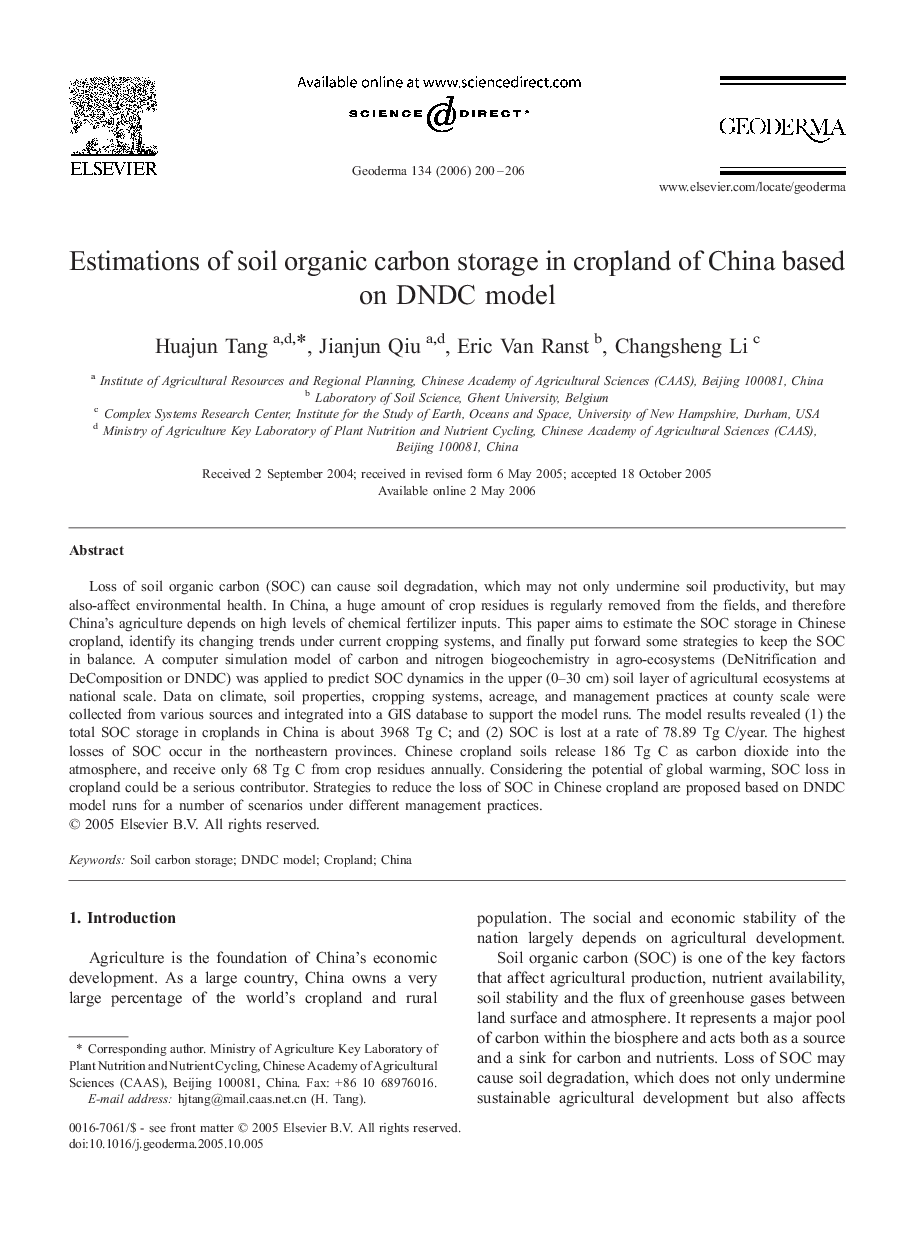| Article ID | Journal | Published Year | Pages | File Type |
|---|---|---|---|---|
| 4575800 | Geoderma | 2006 | 7 Pages |
Loss of soil organic carbon (SOC) can cause soil degradation, which may not only undermine soil productivity, but may also-affect environmental health. In China, a huge amount of crop residues is regularly removed from the fields, and therefore China's agriculture depends on high levels of chemical fertilizer inputs. This paper aims to estimate the SOC storage in Chinese cropland, identify its changing trends under current cropping systems, and finally put forward some strategies to keep the SOC in balance. A computer simulation model of carbon and nitrogen biogeochemistry in agro-ecosystems (DeNitrification and DeComposition or DNDC) was applied to predict SOC dynamics in the upper (0–30 cm) soil layer of agricultural ecosystems at national scale. Data on climate, soil properties, cropping systems, acreage, and management practices at county scale were collected from various sources and integrated into a GIS database to support the model runs. The model results revealed (1) the total SOC storage in croplands in China is about 3968 Tg C; and (2) SOC is lost at a rate of 78.89 Tg C/year. The highest losses of SOC occur in the northeastern provinces. Chinese cropland soils release 186 Tg C as carbon dioxide into the atmosphere, and receive only 68 Tg C from crop residues annually. Considering the potential of global warming, SOC loss in cropland could be a serious contributor. Strategies to reduce the loss of SOC in Chinese cropland are proposed based on DNDC model runs for a number of scenarios under different management practices.
